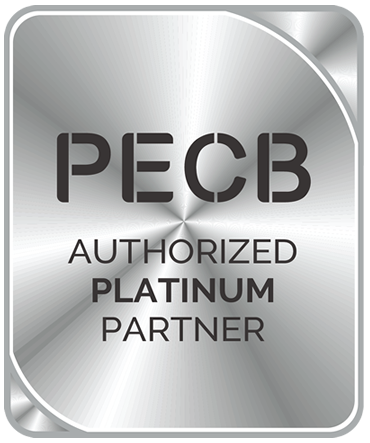ISO 55001 Certification - Asset Management System (AMS)
ISO 55001 Certification Audit
ISO 55001 Certification - Asset Management System (AMS)
ISO 55001 Certification Audit
ISO 55001 Certification provides proof of conformance to the international requirements for an Asset Management System (AMS) based on the ISO 55001 Standard published by the International Organization for Standardization (ISO).
What is ISO 55001?
ISO 55001 Certification provides reasonable assurance to stakeholders and interested parties including your organizations clients, investors, Board of Directors and Officers, employees, etc that you are properly managing all "assets". These resources can be either tangible assets or intangible assets.
Tangible assets may include cash, investments, physical property like buildings or land, computer equipment, machinery, automotive, software code, networks, product inventory, people, etc.
Intangible assets may include non-physical things like trademarks, patents, goodwill, reputation and brand.
ISO 55001 Asset Management Systems (AMS) provides governance of these assets for which an organization has a fiduciary responsibility to protect, on behalf of their stakeholders and interested parties.
The requirements of ISO 55001 and all ISO Management Systems are "generic" and are intended to be applicable to all organizations (or parts of an organization, business units, departments or business processes), regardless of type, size and nature of activity, and whether in the public, private or not-for-profit sectors.
ISO 55001 certification also known as "registration", is a 3rd party audit performed by a certification body (registrar) such as MSECB (iCertWorks) who, upon verification that an organization is in conformance with the auditable requirements of ISO 55001, will issue an ISO 55001 Certificate. This certification is then maintained through regularly scheduled annual surveillance audits by the registrar, with re-certification performed on a three year audit cycle.
For more information on ISO 55001 Certification, please fill out the request form on the right side of the page.
Benefits of ISO 55001 Certification
- Improved performance of an asset management and control of its life-cycle
- Reduced risks and costs related to assets ownership
- Provides reasonable assurance to stakeholders and interested parties
- Provides proof of conformance to international industry standards (best practices)
- Provides sales differentiator for products and services
- Promotes training and awareness
- Promotes a continuous improvement cycle
- Provides legal, regulatory and contractual compliance
- Ensures Governance, Risk and Compliance (GRC) requirements
- Reduces the likelihood of legal prosecution and fines
- Reduces insurance costs, litigation, claims and liability.
What is the ISO 55001 three year audit cycle?
The ISO 55001 Certification three year audit cycle includes:
- Year 1 - Full Stage 1 & Stage 2 Audit
- Year 2 - First Surveillance Audit (partial system audit)
- Year 3 - Second Surveillance Audit (partial system audit)
- Year 4 - 3 year Audit Cycle starts over (repeats)
What is the difference between ISO 55000 and 55001?
All ISO Standards are created by the International Organization of Standards, also known as ISO for short. Each ISO category such as ISO 55000 Asset Management Systems is actually "series of standards" providing clarity to defined terminology, generic management system requirements, implementation guidance, audit guidance, generic control catalogs including specific industries, etc.
The first standard in every ISO Series defines the vocabulary, terminology and basic concepts so that everyone in the world is working of the same basic principals and talking the same talk.
The ISO 55000 Standard:
- Covers internationally accepted asset management terminology and vocabulary definitions so everyone in the world is consistent.
- Provides a high-level overview of asset management.
- Not directly used for certification as it only outlines basic generic concepts.
The ISO 55001 Standard:
- Defines the generic clause 4-10 auditable international requirements for an Asset Management Systems (AMS) resulting in certification and/or conformance.
- Includes the requirements for establishing, implementing, maintaining, and improving an organization's asset management system (AMS) formerly known as Plan, Do, Check Act (PDCA).
What are the ISO 55001 Requirements?
The ISO 55001 Standard establishes the international auditable generic requirements for an Asset Management System (AMS) in clauses 4-10 including:
Clause 4 - Context of the Organization (scope)
Clause 5 - Leadership (Executive Level Policy & Directive)
Clause 6 - Planning (Risk Assessment Process)
Clause 7 - Support (Training & Awareness, Control of Documents, etc)
Clause 8 - Operation (Policies, Processes & Procedures)
Clause 9 - Performance Evaluation (Monitor & Measure, Audit Program, Management Review
Clause 10 - Corrective Actions
What are the Key Points of ISO 55001?
ISO 55001 Key Points
Asset definition:
Clearly defining what constitutes an asset for the organization, including both physical and intangible assets.
Strategic alignment:
Integrating asset management strategies with overall business goals and objectives.
Life cycle management:
Managing assets through their entire lifecycle, from acquisition to disposal, including planning, operation, maintenance, and decommissioning.
Risk management:
Identifying, analyzing, and mitigating potential risks associated with assets.
Performance measurement:
Establishing key performance indicators (KPIs) to monitor and evaluate asset performance.
Continuous improvement:
Implementing a process for ongoing improvement of the asset management system.
Leadership commitment:
Ensuring top management actively supports and participates in the asset management system.
Communication and stakeholder engagement:
Effective communication with all relevant stakeholders regarding asset management strategies and performance.


